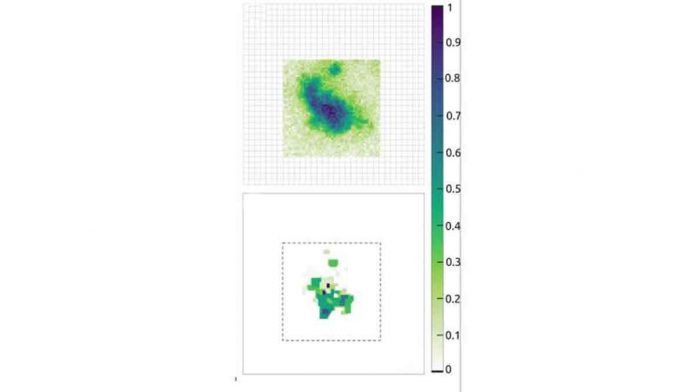A hair-thin optical fibre holds promise for use in minimally invasive deep-tissue studies of patients’ brains to demonstrate the effects of Alzheimer’s disease and other brain disorders. The findings could pave the way for minimally invasive in vivo brain imaging in lab studies as well as long-term neuronal activity monitoring in patients with neurological disorders.
“The ultrathin multimode fibre would easily fit into an acupuncture needle, and we know these needles can be inserted into anyone’s body with almost no pain, potentially enabling deep-tissue imaging in real time,” Vrije Universiteit Amsterdam co-author Benjamin Lochocki said.
Because light scrambling causes information loss, the challenge is to efficiently increase image resolution at the subcellular level. Researchers in the Netherlands address this challenge in APL Photonics with speckle-based compressive imaging (SBCI), which takes advantage of the light scrambling of multimode fibres.
Because of their small size, optical fibres, a well-known solution for guiding light over long distances, have gained increasing attention in microendoscopy as a better way to access deep-lying tissue. They also eliminate the need for fluorescent labelling, which is a time-consuming and costly process.
Typically, light scrambling is addressed by shaping the wavefront of an incident beam to reduce scattering and create a focused beam at the fiber’s distal end. This technique, however, has limitations in terms of acquisition speed and producing high-quality deep tissue images.
SBCI modifies the laser beam’s entry position, resulting in multiple, uncorrelated random speckle patterns at the fibre output. Based on the pattern and the information gathered, a computer algorithm can reconstruct an image of the object.
This “compressive imaging” technique reduces the number of pixel measurements required to reconstruct an image of comparable or better quality than the gold-standard raster imaging used in traditional endoscopes and microscopes. SBCI can produce high-resolution images up to 11 times faster for a three-times larger space than traditional raster-scan methods.
Lipofuscin, an age-related fluorescent pigment that accumulates as metabolic waste in the soma, the part of neurons that contains the nucleus and is responsible for neurotransmitter production, was imaged using the technique. Although little is known about this process, abnormal lipofuscin accumulation may be linked to Alzheimer’s disease progression.
The pigment buildup was observed in a brain tissue sample obtained from an Alzheimer’s patient donor via the Netherlands Brain Bank.

